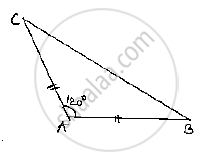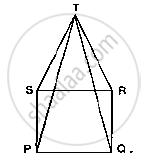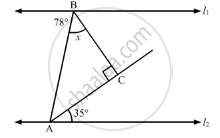Advertisements
Advertisements
Question
In a ΔABC, if ∠A=l20° and AB = AC. Find ∠B and ∠C.
Solution
Consider a ΔABC,
Given that ∠A = 120° and AB = AC and given to find ∠B and ∠C
We can observe that DABC is an isosceles triangle since AB = AC
⇒∠B=∠C ………(1) [Angles opposite to equal sides are equal]
We know that sum of angles in a triangle is equal to `180^@`
`⇒∠A+∠B+∠C=180^@`
⇒`∠A+∠B+∠B=180^@` [from (1)]
⇒`120^@+2∠B=180^@`
⇒`2∠B=180^@-120^@`
⇒`2∠B=60^@⇒∠B=30^@`
⇒`∠C=∠B=30^@`

APPEARS IN
RELATED QUESTIONS
In Fig. 10.23, PQRS is a square and SRT is an equilateral triangle. Prove that
(i) PT = QT (ii) ∠TQR = 15°

Find the measure of each exterior angle of an equilateral triangle.
Which of the following statements are true (T) and which are false (F):
The two altitudes corresponding to two equal sides of a triangle need not be equal.
Prove that the perimeter of a triangle is greater than the sum of its altitudes.
In the given figure, if EC || AB, ∠ECD = 70° and ∠BDO = 20°, then ∠OBD is
In the given figure, for which value of x is l1 || l2?

The base BC of triangle ABC is produced both ways and the measure of exterior angles formed are 94° and 126°. Then, ∠BAC =
In ∆ABC, BC = AB and ∠B = 80°. Then ∠A is equal to ______.
It is given that ∆ABC ≅ ∆FDE and AB = 5 cm, ∠B = 40° and ∠A = 80°. Then which of the following is true?
Show that in a quadrilateral ABCD, AB + BC + CD + DA < 2(BD + AC)
